WTF Solidity极简入门: 20. 发送ETH
我最近在重新学 Solidity,巩固一下细节,也写一个“WTF Solidity极简入门”,供小白们使用(编程大佬可以另找教程),每周更新 1-3 讲。
所有代码和教程开源在 github: github.com/AmazingAng/WTF-Solidity
Solidity有三种方法向其他合约发送ETH,他们是:transfer(),send()和call(),其中call()是被鼓励的用法。
接收ETH合约
我们先部署一个接收ETH合约ReceiveETH。ReceiveETH合约里有一个事件Log,记录收到的ETH数量和gas剩余。还有两个函数,一个是receive()函数,收到ETH被触发,并发送Log事件;另一个是查询合约ETH余额的getBalance()函数。
contract ReceiveETH {
// 收到eth事件,记录amount和gas
event Log(uint amount, uint gas);
// receive方法,接收eth时被触发
receive() external payable{
emit Log(msg.value, gasleft());
}
// 返回合约ETH余额
function getBalance() view public returns(uint) {
return address(this).balance;
}
}
部署ReceiveETH合约后,运行getBalance()函数,可以看到当前合约的ETH余额为0。
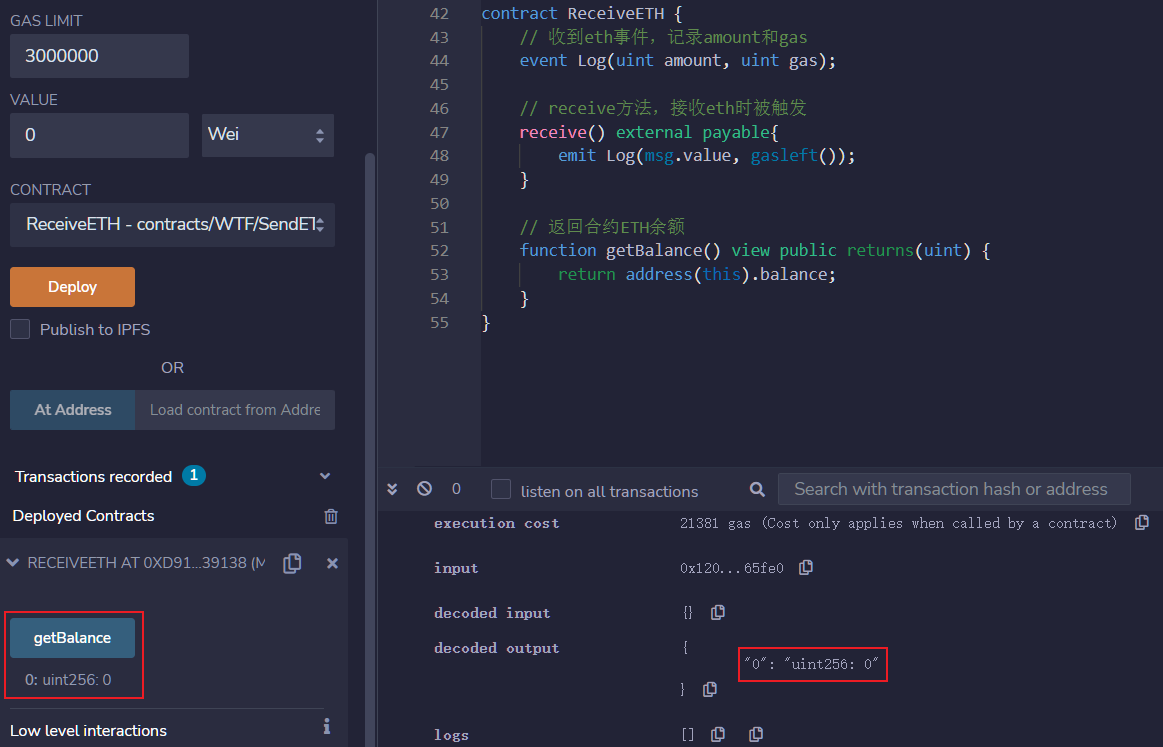
发送ETH合约
我们将实现三种方法向ReceiveETH合约发送ETH。首先,先在发送ETH合约SendETH中实现payable的构造函数和receive(),让我们能够在部署时和部署后向合约转账。
contract SendETH {
// 构造函数,payable使得部署的时候可以转eth进去
constructor() payable{}
// receive方法,接收eth时被触发
receive() external payable{}
}
transfer
- 用法是
接收方地址.transfer(发送ETH数额)。 transfer()的gas限制是2300,足够用于转账,但对方合约的fallback()或receive()函数不能实现太复杂的逻辑。transfer()如果转账失败,会自动revert(回滚交易)。
代码样例,注意里面的_to填ReceiveETH合约的地址,amount是ETH转账金额:
// 用transfer()发送ETH
function transferETH(address payable _to, uint256 amount) external payable{
_to.transfer(amount);
}
部署SendETH合约后,对ReceiveETH合约发送ETH,此时amount为10,value为0,amount>value,转账失败,发生revert。
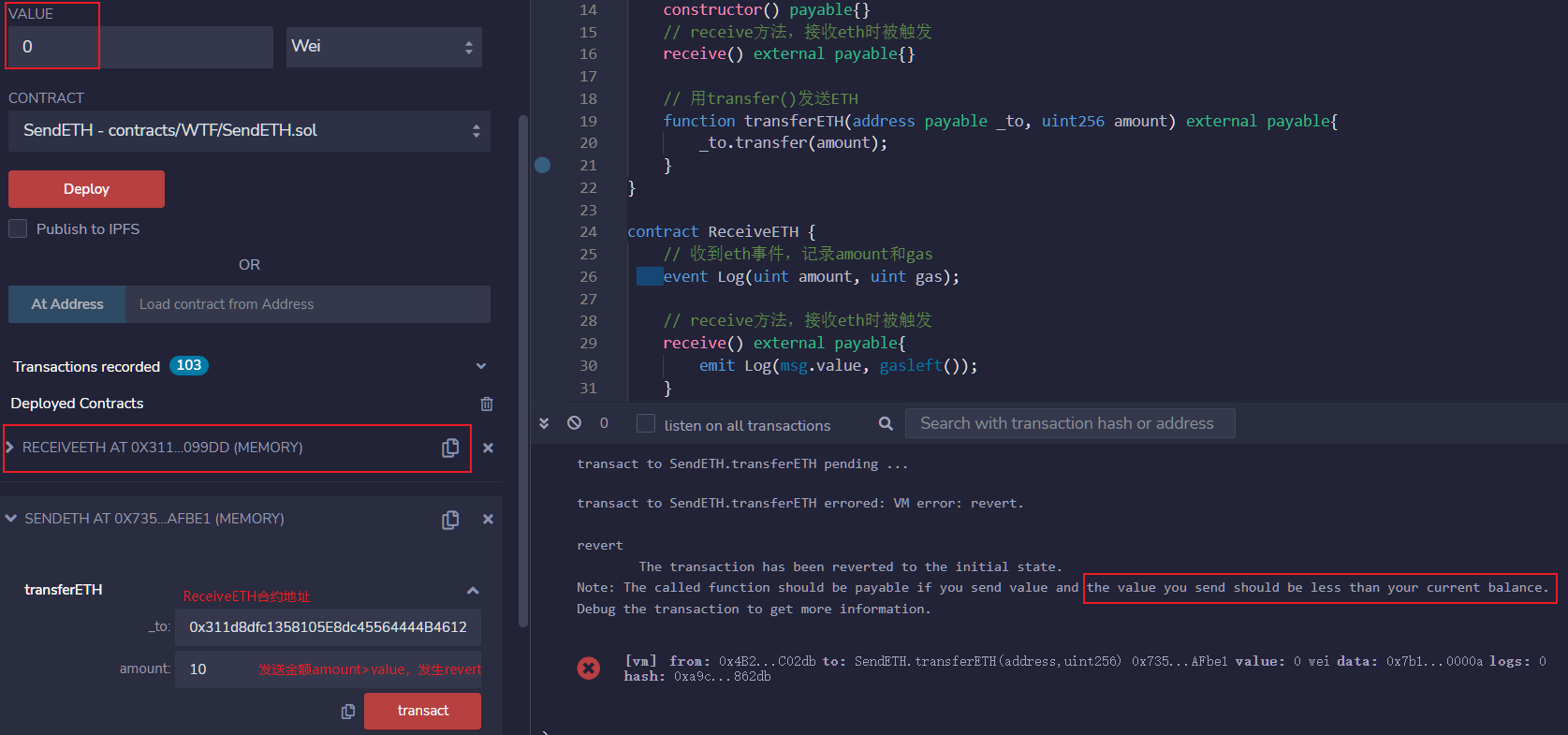
此时amount为10,value为10,amount<=value,转账成功。
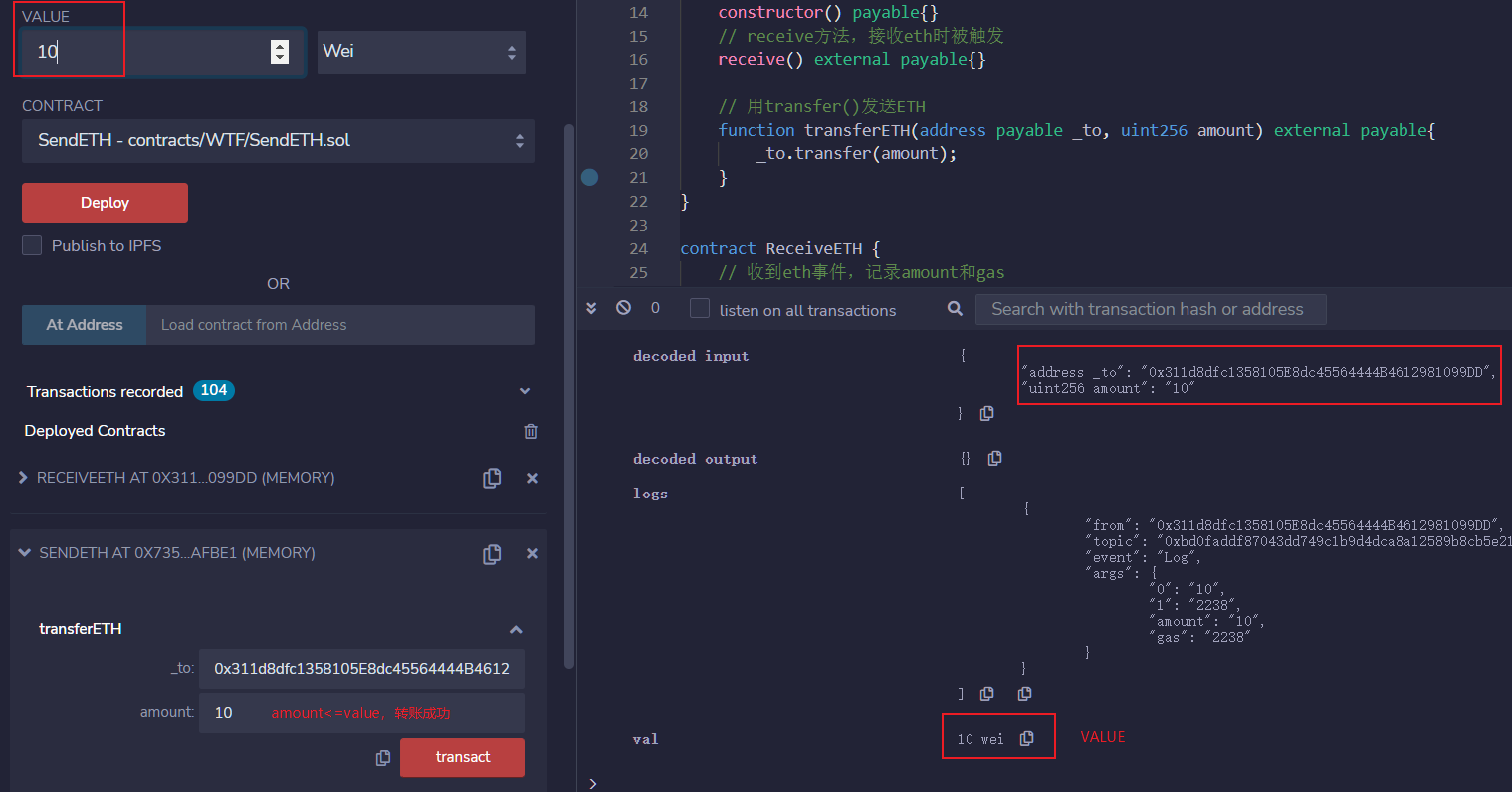
在ReceiveETH合约中,运行getBalance()函数,可以看到当前合约的ETH余额为10。
send
- 用法是
接收方地址.send(发送ETH数额)。 send()的gas限制是2300,足够用于转账,但对方合约的fallback()或receive()函数不能实现太复杂的逻辑。send()如果转账失败,不会revert。send()的返回值是bool,代表着转账成功或失败,需要额外代码处理一下。
代码样例:
error SendFailed(); // 用send发送ETH失败error
// send()发送ETH
function sendETH(address payable _to, uint256 amount) external payable{
// 处理下send的返回值,如果失败,revert交易并发送error
bool success = _to.send(amount);
if(!success){
revert SendFailed();
}
}
对ReceiveETH合约发送ETH,此时amount为10,value为0,amount>value,转账失败,因为经过处理,所以发生revert。
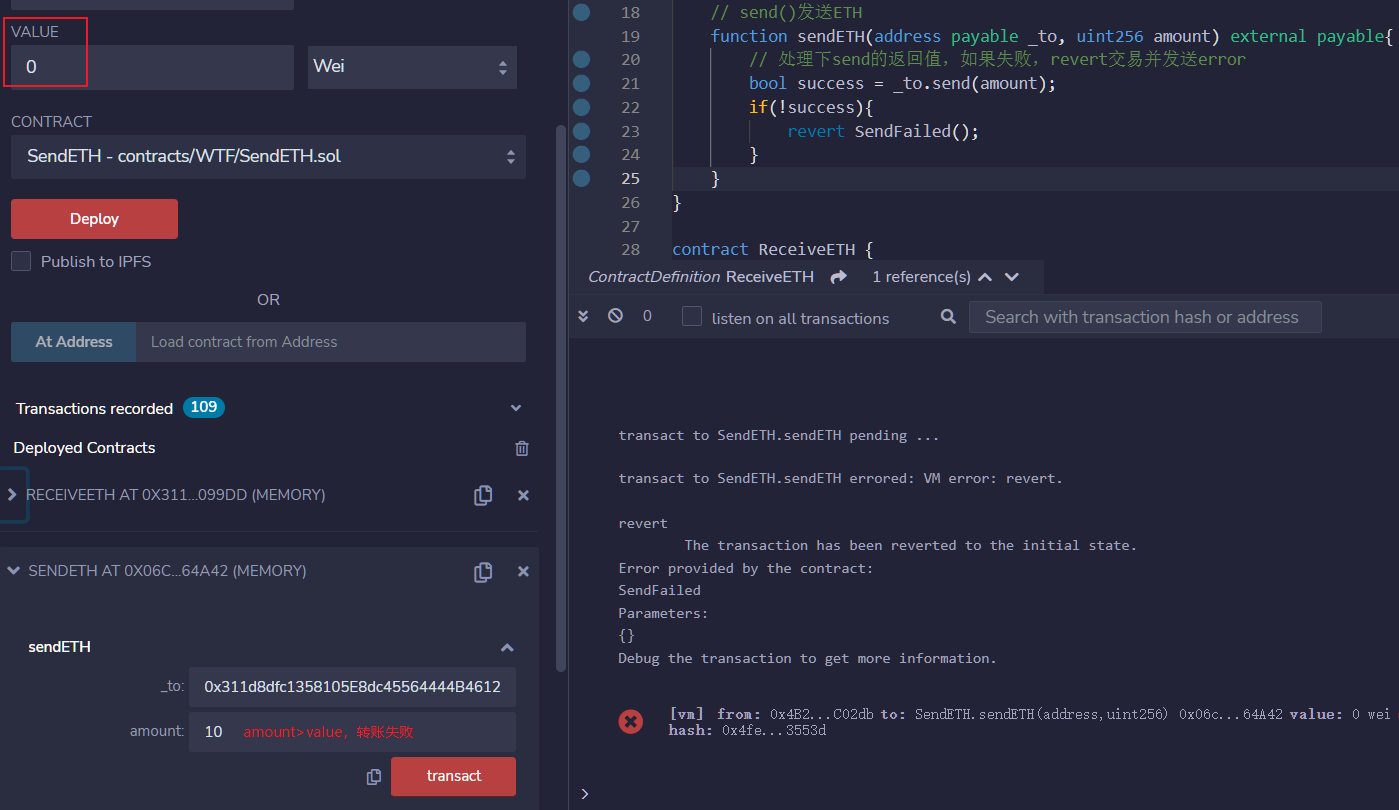
此时amount为10,value为11,amount<=value,转账成功。
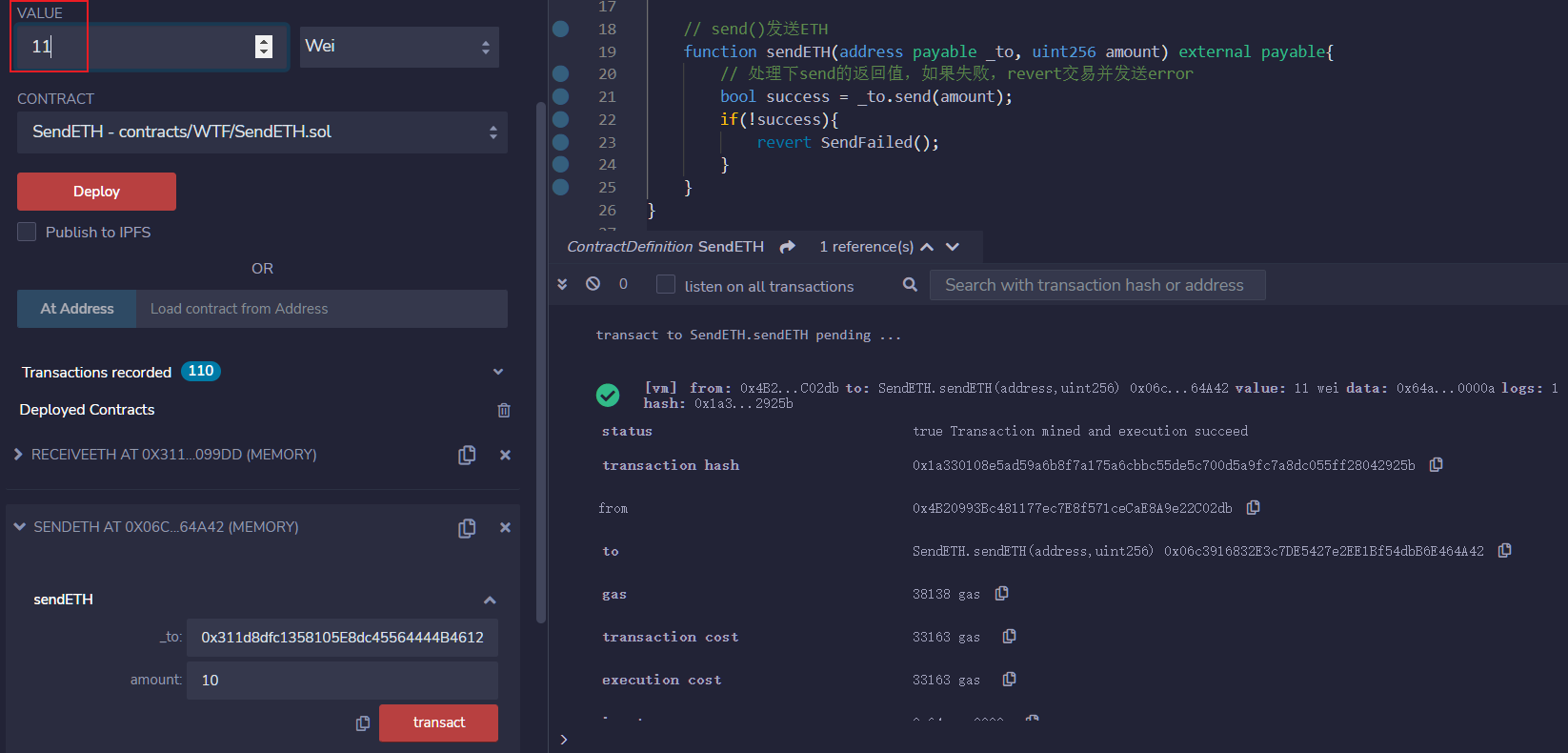
call
- 用法是
接收方地址.call{value: 发送ETH数额}("")。 call()没有gas限制,可以支持对方合约fallback()或receive()函数实现复杂逻辑。call()如果转账失败,不会revert。call()的返回值是(bool, bytes),其中bool代表着转账成功或失败,需要额外代码处理一下。
代码样例:
error CallFailed(); // 用call发送ETH失败error
// call()发送ETH
function callETH(address payable _to, uint256 amount) external payable{
// 处理下call的返回值,如果失败,revert交易并发送error
(bool success,) = _to.call{value: amount}("");
if(!success){
revert CallFailed();
}
}
对ReceiveETH合约发送ETH,此时amount为10,value为0,amount>value,转账失败,因为经过处理,所以发生revert。
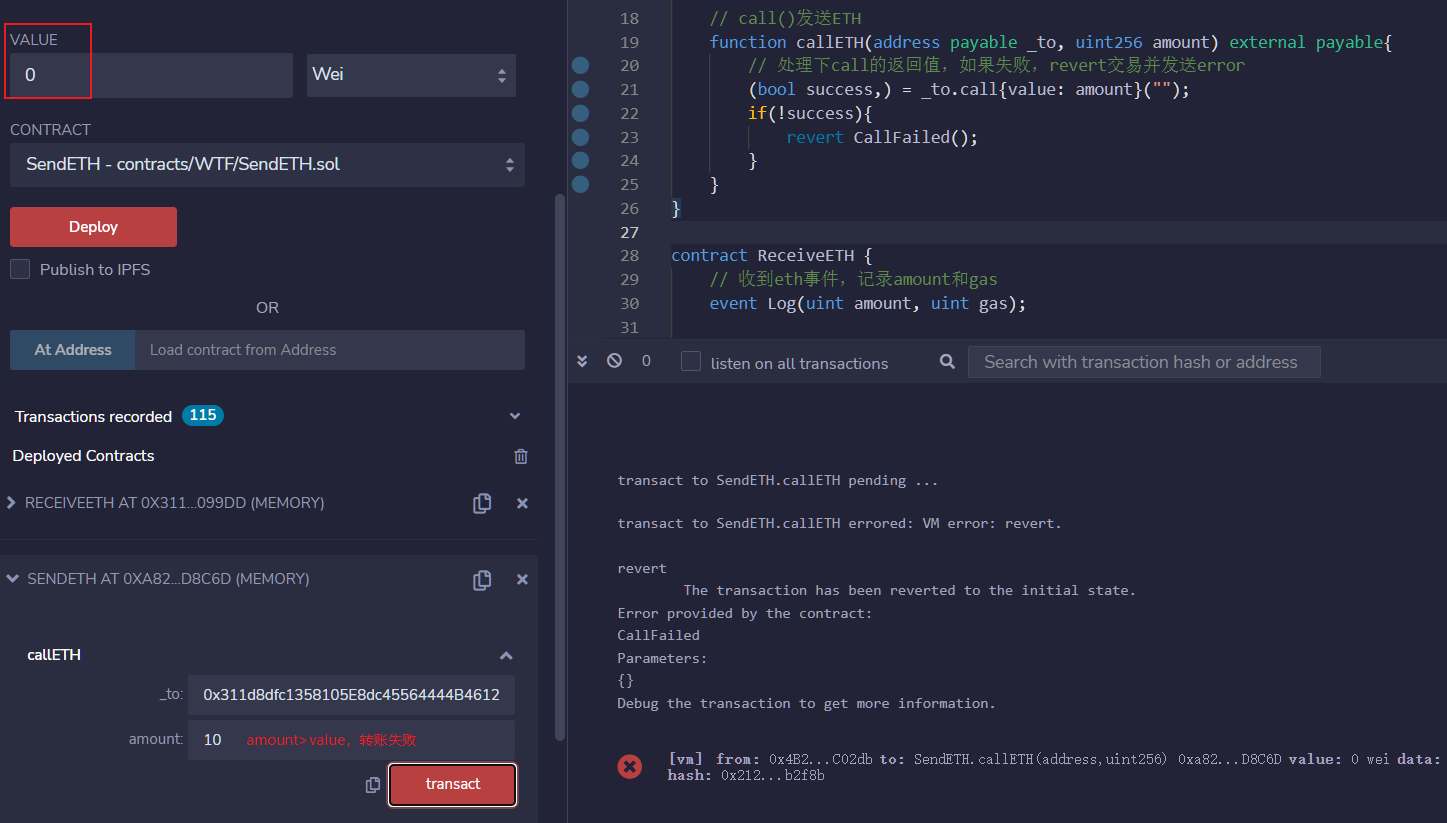
此时amount为10,value为11,amount<=value,转账成功。
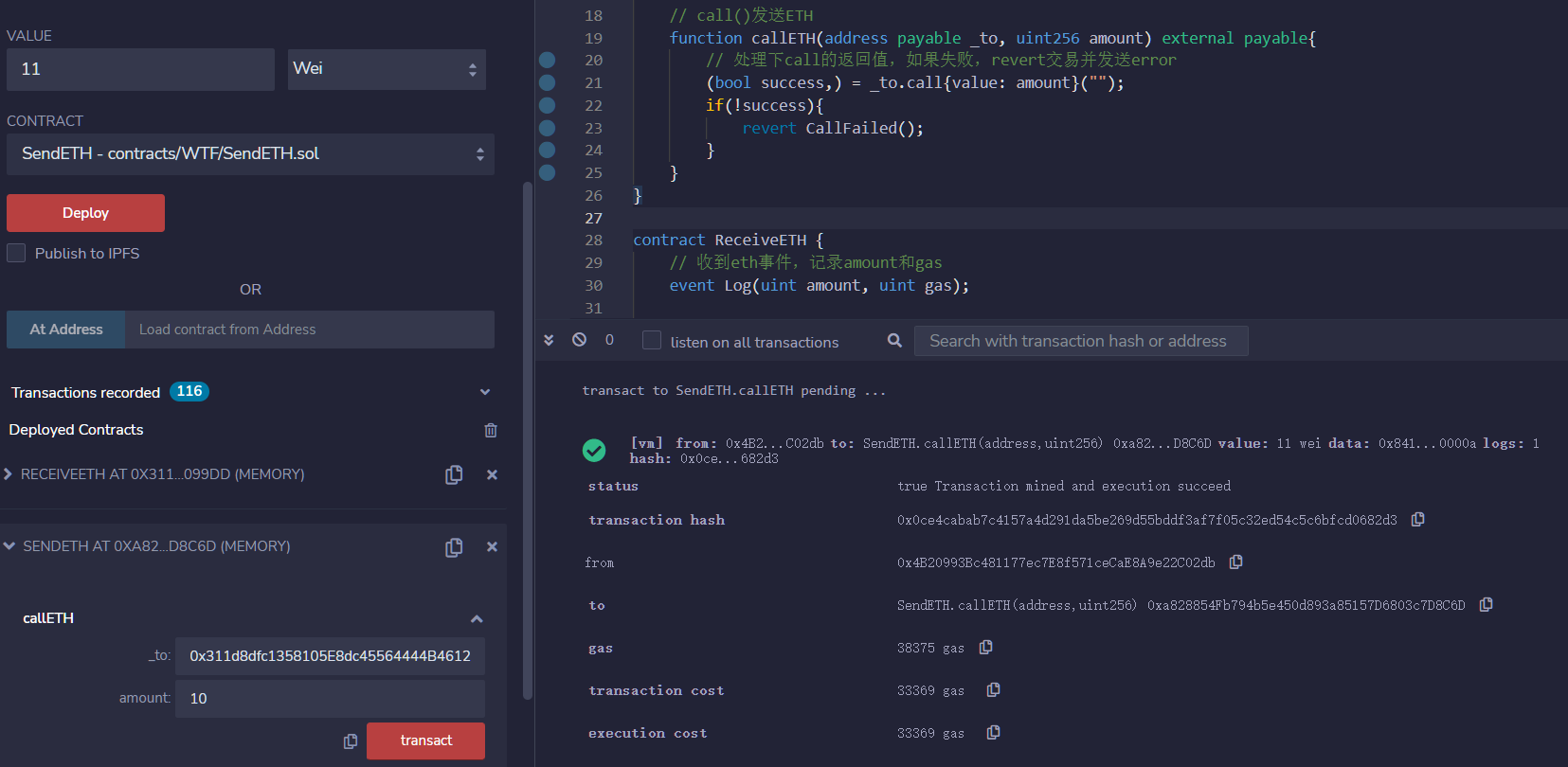
运行三种方法,可以看到,他们都可以成功地向ReceiveETH合约发送ETH。
总结
这一讲,我们介绍Solidity三种发送ETH的方法:transfer,send和call。
call没有gas限制,最为灵活,是最提倡的方法;transfer有2300 gas限制,但是发送失败会自动revert交易,是次优选择;send有2300 gas限制,而且发送失败不会自动revert交易,几乎没有人用它。